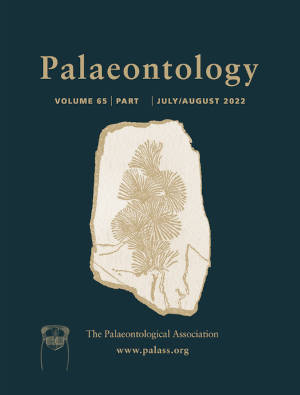Article: Network-based biostratigraphy for the late Permian to mid-Triassic Beaufort Group (Karoo Supergroup) in South Africa enhances biozone applicability and stratigraphic correlation
Publication: Palaeontology
Volume:
65
Part:
5
Publication Date:
2022
Article number:
e12622
Author(s):
Pia A. Viglietti, Alexis Rojas, Martin Rosvall, Brady Klimes, and Kenneth D. Angielczyk
Abstract
Abstract The Permo-Triassic vertebrate assemblage zones (AZs) of South Africa's Karoo Basin are a standard for local and global correlations. However, temporal, geographical and methodological limitations challenge the AZs reliability. We analyse a unique fossil dataset comprising 1408 occurrences of 115 species grouped into 19 stratigraphic bin intervals from the Cistecephalus, Daptocephalus, Lystrosaurus declivis and Cynognathus AZs. Using network science tools we compare six frameworks: Broom, Rubidge, Viglietti, Member, Formation, and one suggesting diachroneity of the Daptocephalus/Lystrosaurus AZ boundary (Gastaldo). Our results demonstrate that historical frameworks (Broom, Rubidge) still identify the Karoo AZs. No scheme supports the Cistecephalus AZ, and it probably comprises two discrete communities. The Lystrosaurus declivis AZ is traced across all frameworks, despite many shared species with the underlying Daptocephalus AZ, suggesting that the extinction event across this interval is not a statistical artefact. A community shift at the upper Katberg to lower Burgersdorp formations may indicate a depositional hiatus which has important implications for regional correlations, and Mesozoic ecosystem evolution. The Gastaldo model still identifies a Lystrosaurus and Daptocephalus AZ community shift, does not significantly improve recent AZ models (Viglietti), and highlights important issues with some AZ studies. Localized bed-scale lithostratigraphy (sandstone datums), and singleton fossils cannot be used to reject the patterns shown by hundreds of fossils, and regional chronostratigraphic markers of the Karoo foreland basin. Metre-level occurrence data suggests that 20–50 m sampling intervals capture Karoo AZs, unifying the use of metre-level placements of singleton fossils to delineate biozone boundaries and make regional correlations.
